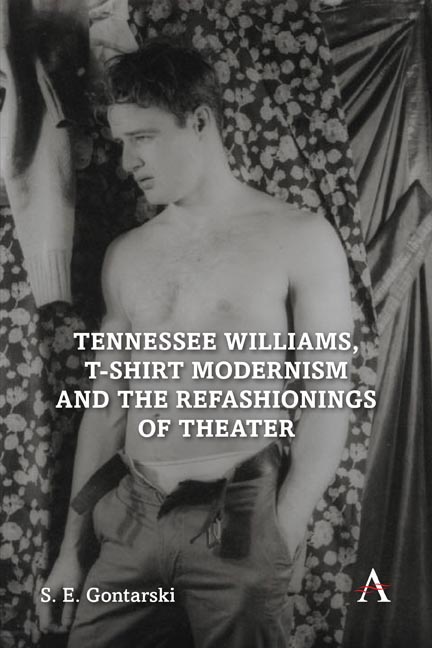Book contents
- Frontmatter
- Dedication
- Contents
- List of Illustrations
- Acknowledgments
- Saint Tennessee: An Introduction
- 1 T- shirt Modernism and Performed Masculinities: The Theatrical Refashionings of Tennessee Williams and William Inge
- 2 “Intense Honesty”: Race, Sex and Cross-Cultural Perspectives
- 3 Becoming Samuel Beckett: Tennessee Williams and Theatrical Change on the Post– World War II World Stage
- 4 Reframing Tennessee: A Short Afterword
- Notes
- Bibliography
- Index
1 - T- shirt Modernism and Performed Masculinities: The Theatrical Refashionings of Tennessee Williams and William Inge
Published online by Cambridge University Press: 25 February 2022
- Frontmatter
- Dedication
- Contents
- List of Illustrations
- Acknowledgments
- Saint Tennessee: An Introduction
- 1 T- shirt Modernism and Performed Masculinities: The Theatrical Refashionings of Tennessee Williams and William Inge
- 2 “Intense Honesty”: Race, Sex and Cross-Cultural Perspectives
- 3 Becoming Samuel Beckett: Tennessee Williams and Theatrical Change on the Post– World War II World Stage
- 4 Reframing Tennessee: A Short Afterword
- Notes
- Bibliography
- Index
Summary
The play cannot be disparaged.
— Arthur Miller of StreetcarIn 1947 when Marlon Brando appeared on stage in a torn sweaty T- shirt there was an earthquake.
— Gore VidalSomething of a dandy drawn to the tuxedo life, the glitz of luxury hotels and room service, Tennessee Williams unleashed a more slovenly, gritty, workingclass modernity in his theatrical revolution in which undergarments grew emblematic. Williams's images of postwar masculinity would develop through the work of his protégé, William Inge, continue on the stage and extend into the iconography of film at least through James Dean, Paul Newman, Al Pacino and Sam Shepard as the distinctions between stage and celluloid blurred into performing arts. Such images became dominant in a mode casually called Southern Gothic, generally emblematized by the working man's depressionera uniform, rivetted overalls or “waist overalls.” Such anti- fashion began to emerge as high fashion in an evolution from cheap, durable emblems of labor to unisexual, shabby- chic fashion statements by century's end (even as fashion and durability are often at cross purposes), and runways, too, became performative spaces as street style merged with, overlapped and became indistinguishable (price tags excepted) from high style. Once foundational, the mere “under- shirt,” the form- fitting, stretch T- shirt, an “unmentionable” at one point, became an emblem, often in tandem with “overalls,” or “blue jeans,” not only of working- class vitality if not virility but also of rugged, middle- class, heightened (mostly white) masculinity as well. These postwar images extended through the youth rebellion of the 1950s and 1960s, into the subsequent tie dye era of the 1960s and 1970s, the grunge of the 1980s and 1990s, to the general shift in American public appearance from suits to sweats, from neckties to tie dyes, to their eventual co- option by corporate America; that is, the emergence, in what is here called T- Shirt Modernism, of athletic wear and training gear as acceptable, even fashionable, public dress and as emblems of masculine virility.
- Type
- Chapter
- Information
- Publisher: Anthem PressPrint publication year: 2021



